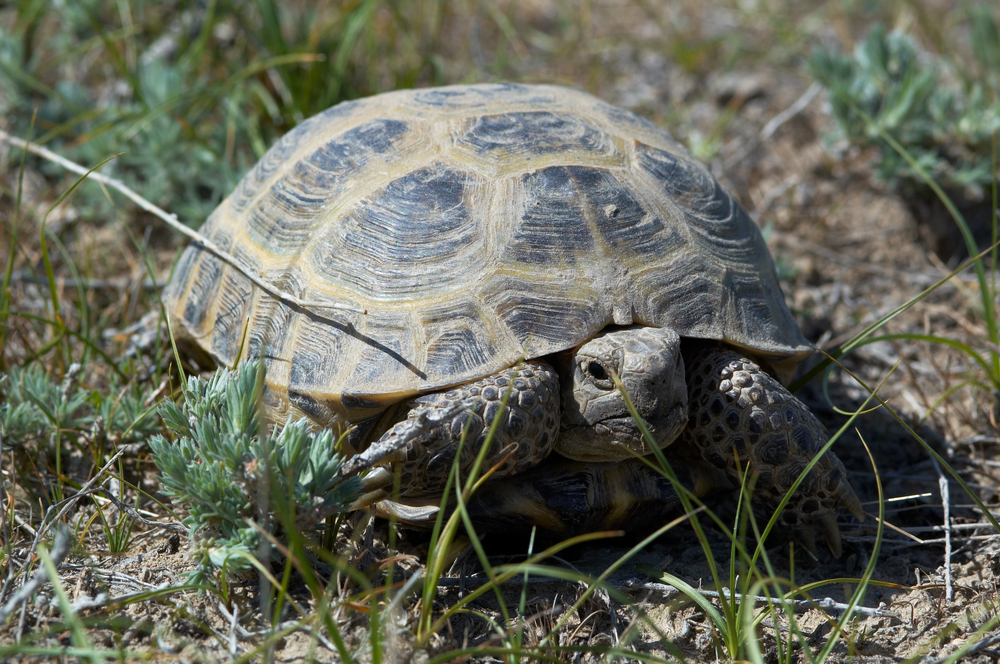When choosing a tortoise as a pet, Russian and Greek tortoises are two popular options that often come up. Both species are known for their charm and unique traits, but they have distinct characteristics and care requirements that set them apart. Understanding these differences can help you make an informed decision about which tortoise is the right fit for your home. This article provides valuable insights on Russian and Greek tortoises, highlighting their similarities and differences to guide your choice.
Russian Tortoises (Agrionemys horsfieldii)
Russian tortoises are a favored choice among tortoise enthusiasts due to their manageable size and hardy nature. Here’s what you need to know about them:
- Size and Lifespan: Russian tortoises are relatively small, typically growing to around 6 to 10 inches in length. They have a long lifespan, often living 40 years or more in captivity with proper care.
- Habitat Needs: Native to the arid regions of Central Asia, Russian tortoises thrive in environments that mimic their natural habitat. They require a temperature range of 70-80°F (21-27°C) with a basking area up to 90°F (32°C). They are adaptable to various substrates but benefit from a mix of soil and sand that allows for digging.
- Diet: Their diet consists mainly of high-fiber grasses and leafy greens. Avoid high-protein foods and fruits, as these can lead to health issues. Calcium supplementation is important to support shell health and overall growth.
- Behavior and Activity: Russian tortoises are known for their digging and burrowing behaviors. They are generally solitary and require space to explore and forage. Regular interaction with their environment helps prevent boredom and maintains their physical and mental health.
Greek Tortoises (Testudo graeca)
Greek tortoises, also known as spur-thighed tortoises, are another popular choice for reptile lovers. Here’s a closer look at their characteristics:
- Size and Lifespan: Greek tortoises are slightly larger than Russian tortoises, typically reaching 8 to 12 inches in length. They also have a long lifespan, often exceeding 50 years with proper care.
- Habitat Needs: Greek tortoises are native to the Mediterranean region and require a habitat that reflects their natural environment. They need a temperature range of 75-85°F (24-29°C) with a basking spot up to 95°F (35°C). Their habitat should include a variety of textures and features, such as rocks and plants, to simulate their natural foraging environment.
- Diet: Their diet is similar to that of Russian tortoises, consisting of high-fiber grasses and leafy greens. They also benefit from a varied diet with occasional vegetables. Calcium and vitamin D3 supplementation is crucial for maintaining shell health and preventing metabolic disorders.
- Behavior and Activity: Greek tortoises are known for their foraging behavior and can be more active than Russian tortoises. They enjoy exploring their environment and benefit from a habitat with ample space and enrichment items. They are also more social and may interact more with their owners and other tortoises.
Comparing the Two Species
Both Russian and Greek tortoises make excellent pets, but they have specific needs that should be considered:
- Size and Space: Russian tortoises are smaller and may require less space compared to Greek tortoises, which need a larger enclosure to accommodate their size and activity level.
- Temperature and Habitat: Russian tortoises are more adaptable to different conditions, whereas Greek tortoises require a more controlled environment to mimic their Mediterranean habitat.
- Diet and Health: Both species have similar dietary needs, but Greek tortoises may require more variety in their diet. Calcium and vitamin supplementation is important for both to prevent health issues.
Conclusion
Choosing between Russian and Greek tortoises involves understanding their unique traits and care requirements. Both species offer distinct benefits and can make wonderful pets with the right care. By considering their size, habitat needs, and behavior, you can select the tortoise that best fits your lifestyle and provides a fulfilling experience for both you and your new reptilian companion.
Embrace the opportunity to care for these fascinating creatures and enjoy the unique qualities they bring to your life.

“Wannabe internet buff. Future teen idol. Hardcore zombie guru. Gamer. Avid creator. Entrepreneur. Bacon ninja.”




